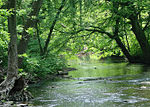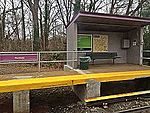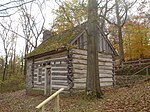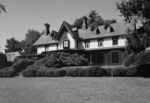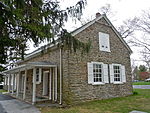Beechwood–Brookline station
Pages with no open date in Infobox stationSEPTA Norristown High Speed Line stations

Beechwood–Brookline station is a SEPTA rapid transit station in Haverford Township, Pennsylvania. It serves the Norristown High Speed Line and is located at Edgewood and Strathmore Roads, although SEPTA gives the address as Beechwood and Karakung Drives. Both local trains and Hughes Park Express trains stop at Beechwood–Brookline. The station lies 2.5 track miles from 69th Street Terminal. The station has off-street parking available.
Excerpt from the Wikipedia article Beechwood–Brookline station (License: CC BY-SA 3.0, Authors, Images).Beechwood–Brookline station
Karakung Drive, Haverford Township
Geographical coordinates (GPS) Address Nearby Places Show on map
Geographical coordinates (GPS)
| Latitude | Longitude |
|---|---|
| N 39.9865 ° | E -75.2916 ° |
Address
Beechwood-Brookline
Karakung Drive
19083 Haverford Township
Pennsylvania, United States
Open on Google Maps


